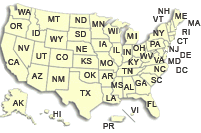South Atlantic Water Science Center - North Carolina Office
|
Project OverviewFull Title Location Cooperating Agencies Project Chief Period of Project Team Members Science Topic USGS IN YOUR STATEUSGS Water Science Centers are located in each state. 
|
Stratification and Water Quality of Jordan LakeApproachTo achieve the study objectives, the USGS will collect data:
This schedule will result in 16 visits to each site per year and a total of 256 individual site visits during the study (4 sites x 16 visits/year x 4 years). Water Column StratificationVertical profiles of water temperature, dissolved oxygen, pH, and specific conductance will be measured through the water column. The vertical profile data will be used to evaluate the spatial and seasonal extent of the mixing system's effects on water-column stratification. After the mixing system has been installed, the USGS also will attempt to quantify local circulation patterns in the lake induced by the mixing system using hydroacoustic techniques. Water-Quality CharacteristicsSecchi depth, the depth to 1 percent incident light, and turbidity will be measured near the water surface. Iron and manganese will be sampled from 2 depths that represent surface and bottom waters. Nutrients and chlorophyll a will be analyzed from vertical-composite samples of the photic zone at all sites; nutrients also will be collected from bottom waters. At site 4, phytoplankton and taste and odor compounds (geosmin and 2-methylisoborneol) will be collected from photic-zone and bottom waters. The USGS will document water-column and water-quality conditions in the study area before and after the vertical-mixing system is installed in a final report. Evaluation will focus on the spatial and temporal scope of mixing system's effects on lake stratification and concentrations of iron, manganese, nutrients, and taste and odor compounds.
(1) Collected at site #0209799150 |
||||||||||||||||||||||||||||||||||||||||||||||||||||||||||||||||||||||||||||||||||||||||||||||||||||||||||||||||||||||||||||||||||